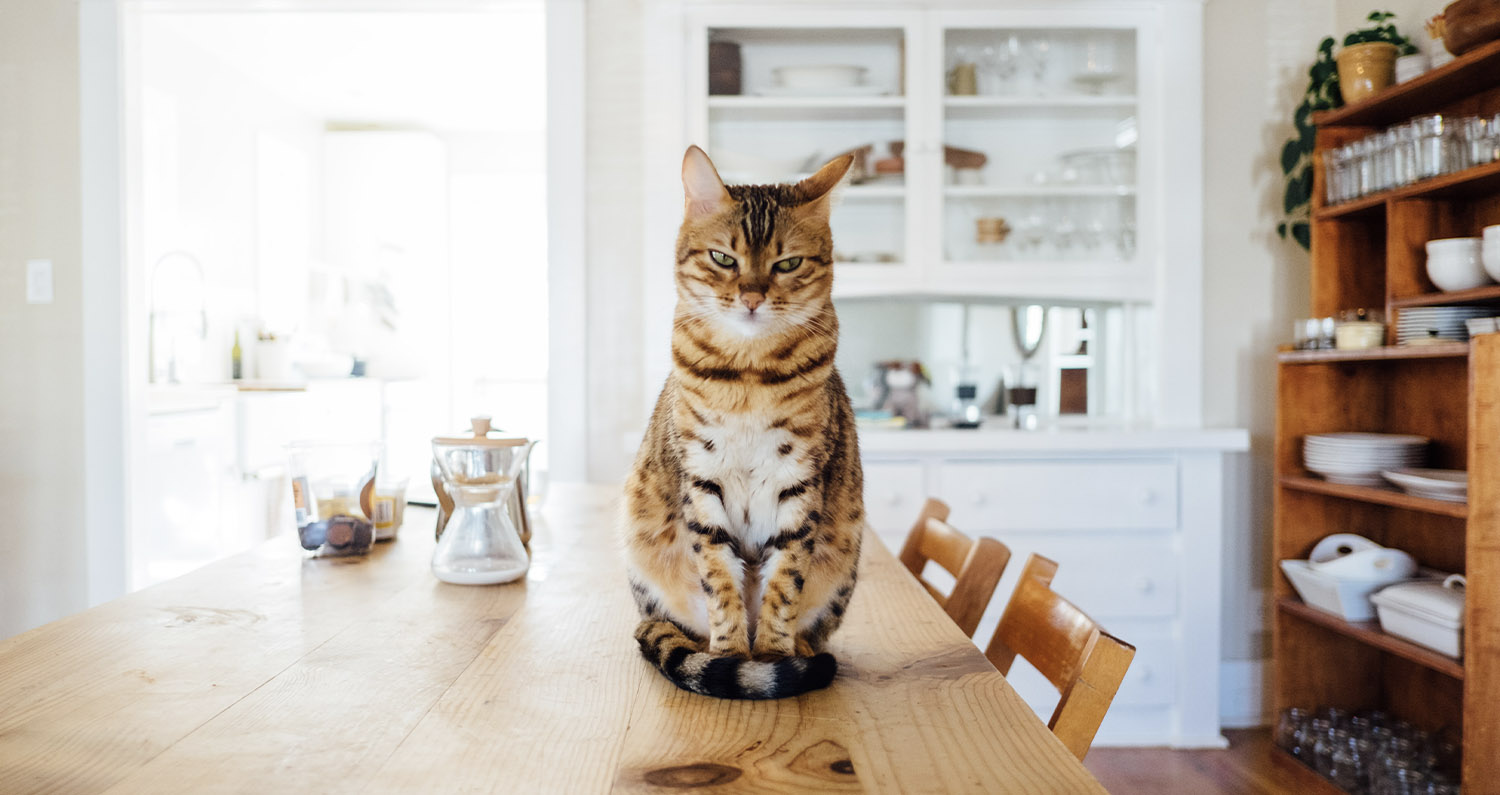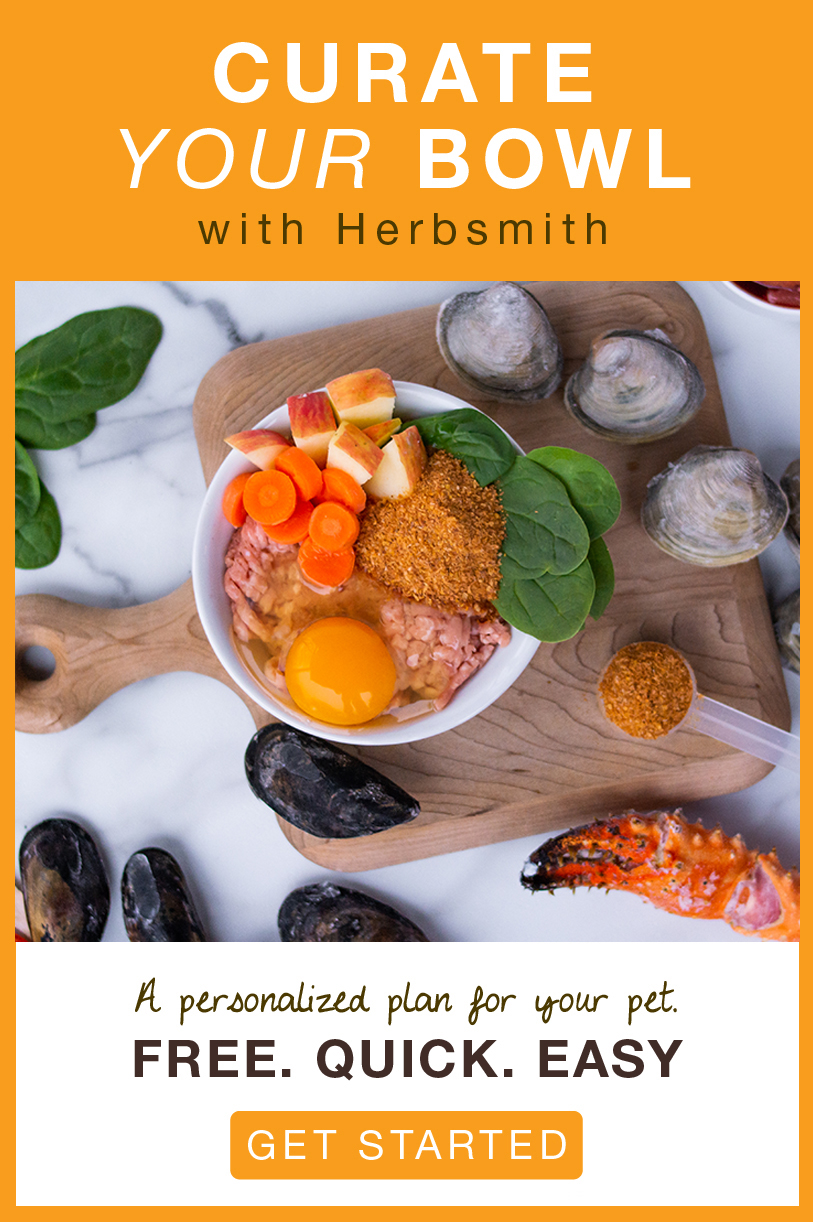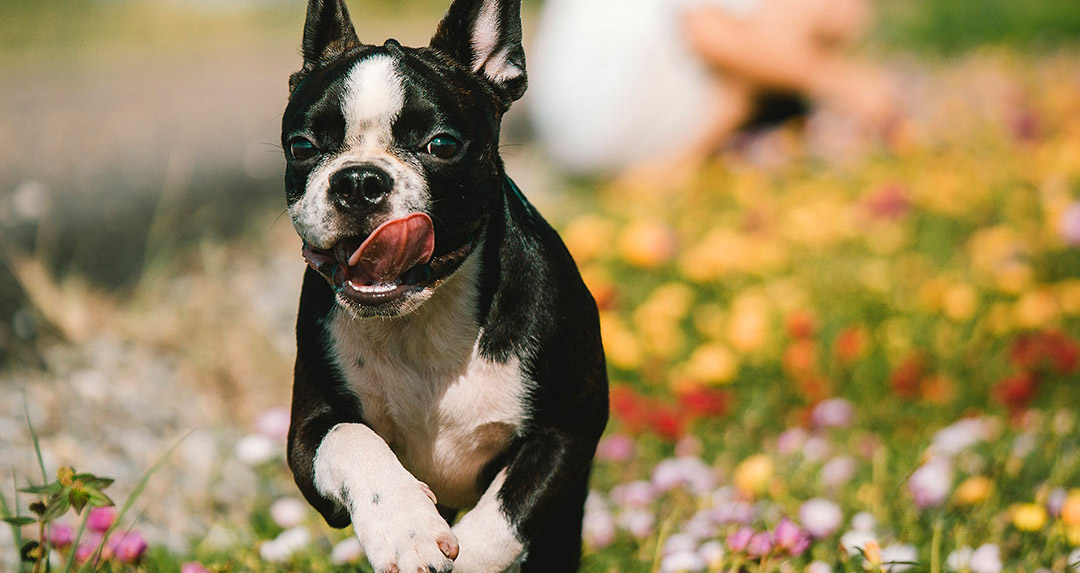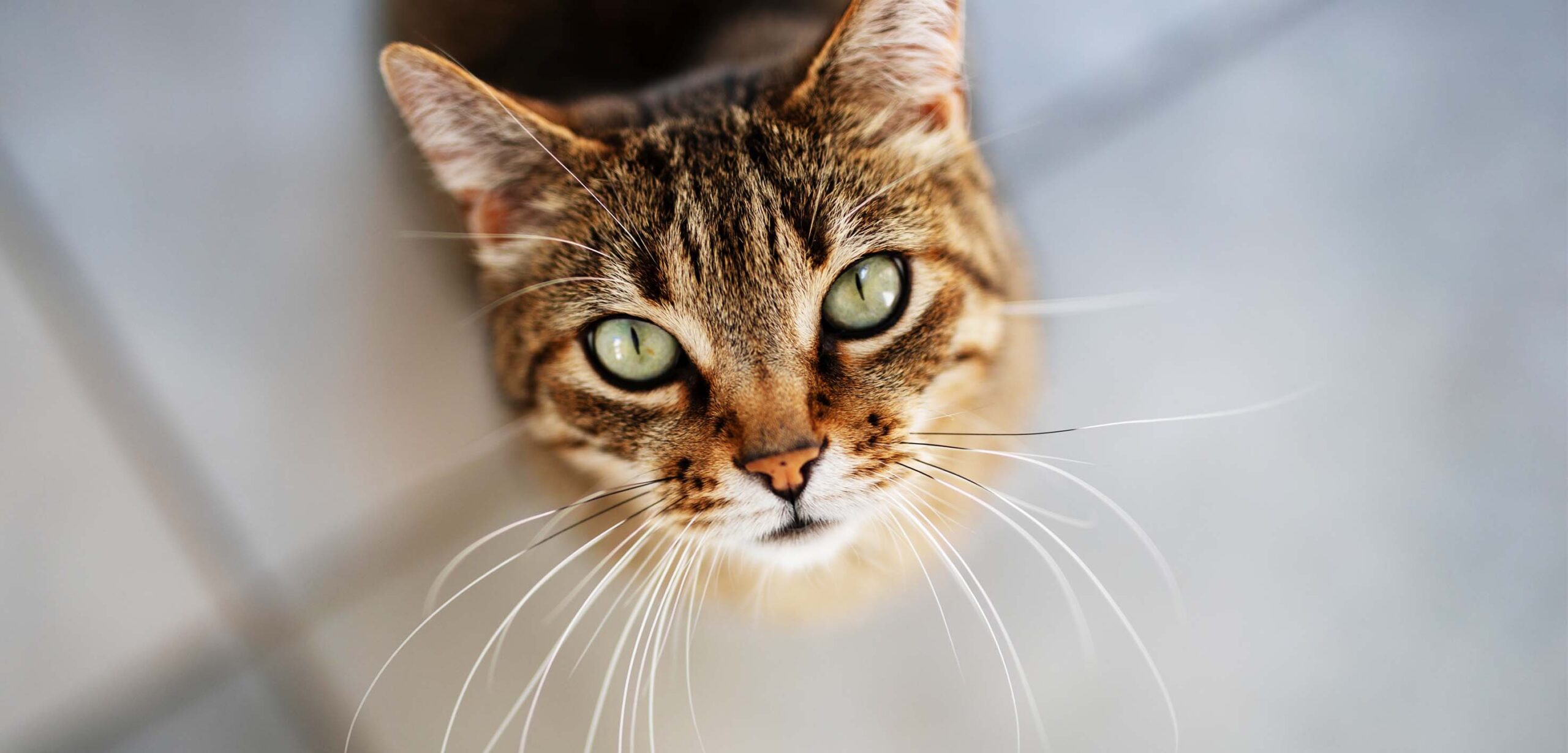Trillions of living microorganisms take up residence in your pet’s gut. Not only is this small ecosystem complex, but every one of our microbiomes is as unique as your own fingerprint or a dog’s boopable nose.
You may already know that the unique collection of diverse microbiota plays a large part in immune health, but it also affects your four-legger’s mood, which spurs changes in their behavior.
Hiding in closets, panting, and shivering– those behaviors could be, at least in part, a result of an imbalanced gut microbiome. Just like wagging tails and sloppy kisses are tied to a healthy and diverse population of gut microbiota.
So, let’s dig deeper into how this complex ecosystem impacts something as seemingly unrelated as your dog’s happy tippy taps.
On The Agenda
What Is The Gut Microbiome?

The microbiome is densely populated with gut bacteria, fungus, viruses, and more, made up of over 1,000 different species to date.
This large microbial community is found in the second half of the digestive tract and is responsible for vitally important functions for your pet.
- Upwards of 80% of the immune system resides around the gut microbiome.
- It keeps harmful bacteria, including salmonella and E. coli, in check.
- It helps your carnivore digest his food more effectively.
- The microbiome makes vitamins that provide energy.
- It creates the majority of hormones, more than the Endocrine System (ENS).
It’s a lot to digest, but that’s what our microbiomes are for. The microbiome impacts the whole body – from the immune system to colon function to mental health.
How Bacteria in Your Pet’s Gut Communicate with the Brain
The microorganisms housed in the gut have such influence on mood and behavior because of this connection called the Gut-Brain Axis.
Since different bacteria make different chemicals, your pet’s mood depends largely on the type of bacteria in their gut.
The microbiome makes hormones, including a few of the more well-known mood regulators:
Serotonin, the neurotransmitter that affects memory and mood– as much as 70% of serotonin is made in the gut microbiome
GABA, a neurotransmitter responsible for defending against stress and anxiety
Dopamine, otherwise known as the “happy” transmitter
And each of these chemical messengers uses that Gut-Brain Axis to communicate with your pet’s brain. Gut-brain speed dial, if you will.
How An Imbalanced Microbiome Contributes to Anxiety In Dogs
Anxiety is rooted in emotion for four-leggers and two-leggers alike, making it a complex topic. (We dive deeper into these complexities here.)
BUT, studies are discovering important connections between gut bacteria and the brain.
Not only do we know that a healthy gut microbiome produces serotonin, but researchers found that certain groups of bacteria tended to be present in higher levels in the more aggressive dogs in the study.
Meaning that your whisker-toter’s mood– happiness, fear, anxiety- is intertwined with their microbiome’s health, diversity, and balance.
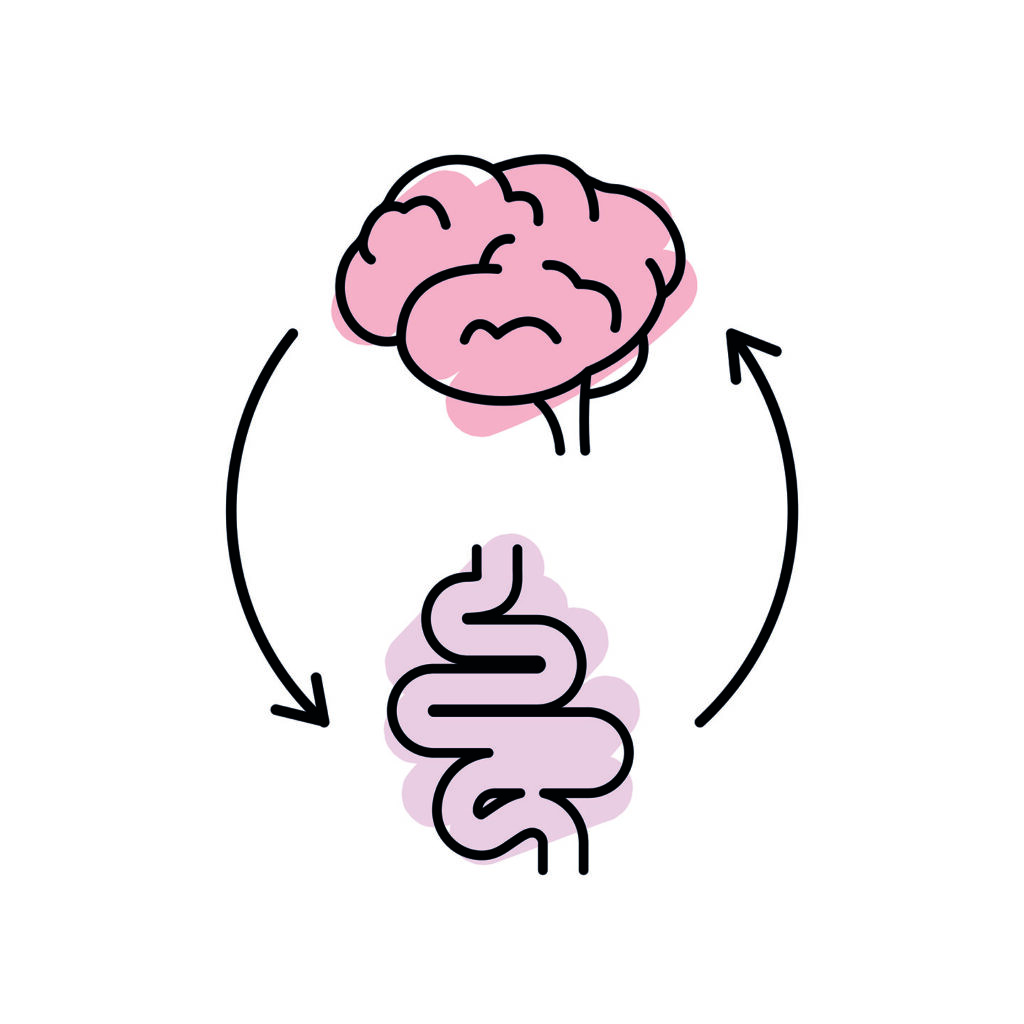
Boosting Your Pet’s Bowl for A Healthy Microbiome
A healthy biome is diverse and balanced. And while powerful, the microbiome is incredibly delicate. Diet, environment, stress, toxins, antibiotics, sleep, and exercise all shape the microbiome and the lengthy list of functions it’s responsible for, including your pet’s mood.
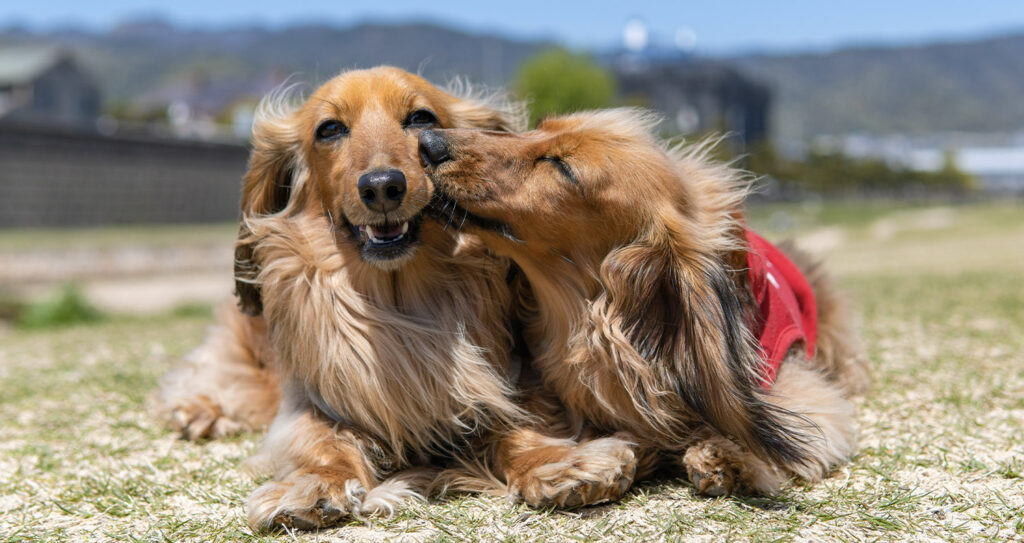
Caring for your four-legger's microbiome starts with what impacts the health and diversity of the gut biome most: diet.
#1 Species-Appropriate Diet
That means real, whole foods, first and foremost– living food with enzymes, antioxidants, and other nutrients needed to diversify the microbiome– in proportions dogs and cats were designed to eat.
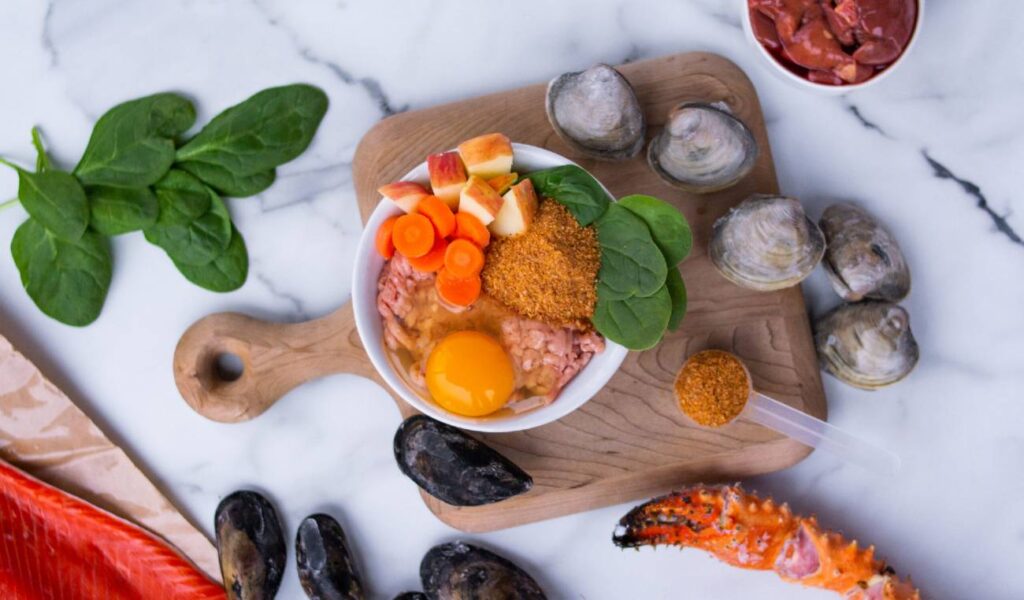
A scavenger carnivore or dog diet–
- 70-80% skeletal and organ meat
Fewer carbs, 25% at most from the most nutrient-rich varieties of veggies, fruit, and seeds
An obligate carnivore or cat diet –
- 80-90% skeletal and organ meat
Fewer carbs, 5-14% at most from veggies, fruit, and seeds
If you plan to create your own balanced DIY raw diet, ideally opt for organic ingredients since pesticides used on conventionally grown produce kills the beneficial bacteria in the gut.
And if you can’t do a DIY balanced raw diet, consider freeze-dried raw recipes created by Dr. Bessent. You get all the balanced nutrition of a raw diet from real whole foods alone, not synthetics.
Once you have this pre-req down, you’ve got a few more additions for their bowl.
#2 Feed Your Pet’s Gut
Add synbiotics– probiotics + prebiotics to the bowl.
Probiotics are beneficial or good bacteria that flood the gut and help to balance the microbiome.
PRO TIP: There must be enough culture-forming units (CFUs) of live probiotics to make it past the stomach. The stomach is an acid pit, so if you don’t provide enough probiotics, it won’t make it to the lower GI tract, where it really matters. That’s why whole food options like kefir can’t be the only probiotics added to the bowl. A splash of probiotics just isn’t enough.
Prebiotics are equally important because they help create a competitive environment for good and bad bacteria. Without prebiotics to fuel the probiotics, they wouldn’t thrive in the gut and do what they do best.
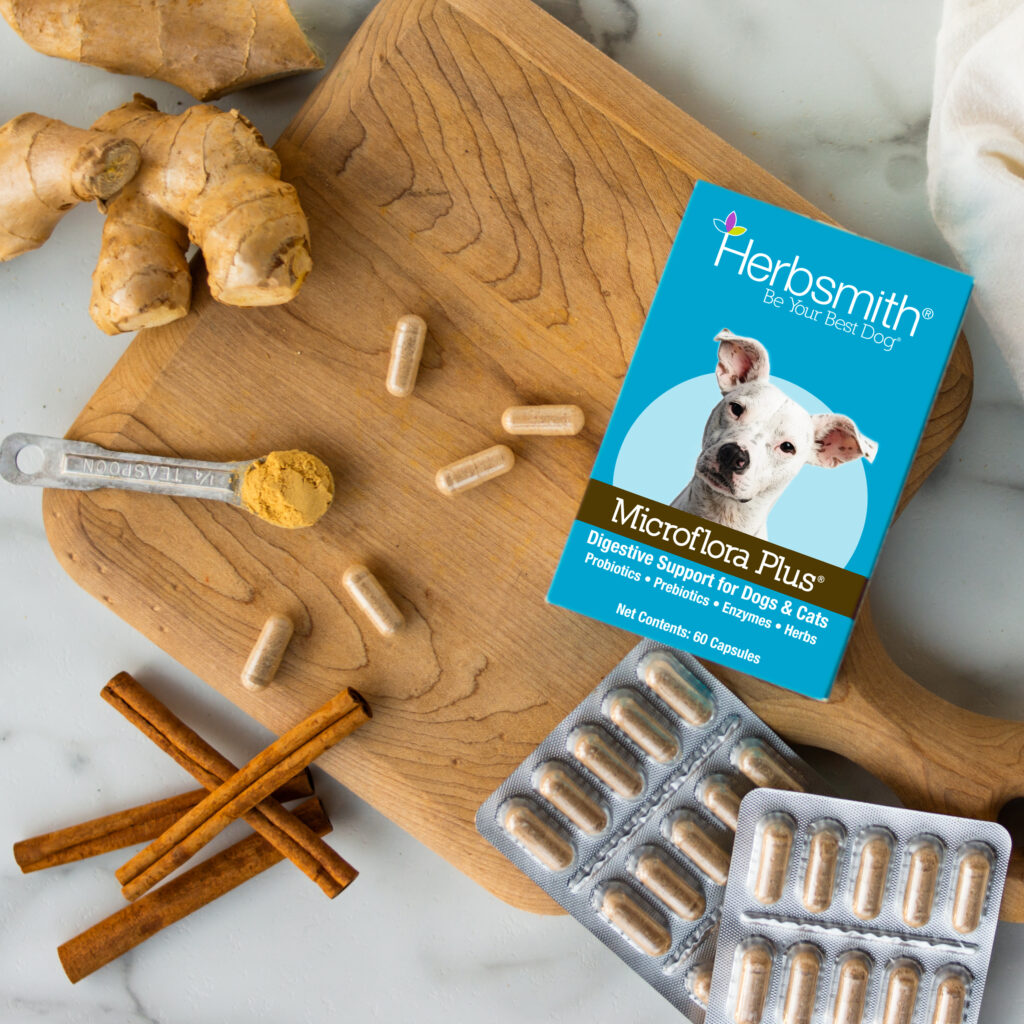
Prebiotics can be controversial, but the key, like any good thing, is balance. If you offer too many prebiotics, you give good and bad bacteria alike an all-you-can-eat buffet. Admittedly, not so good for maintaining a healthy, balanced microbiome. But if you provide too few prebiotics, there isn’t enough food for the probiotics’ journey to the colon where they’ll offer the microbiome and immune system the most relief.
That’s why you really can’t have one without the other– a probiotic + prebiotic or what’s known as a synbiotic to make the journey, create a competitive environment, and reduce the number of bad bacteria for a healthy, balanced microbiome.
Research is just scratching the surface of the microbiome– how the whole operation works, how fragile this complex ecosystem is, and it’s only picking up steam because what’s becoming increasingly apparent is that we can have much more of an impact on the microbiome than we think.
We can take steps to support our pets’ gut, immune system, even their moods just by prioritizing that community of flora! Each addition to the bowl is a step closer to maintaining a healthy gut and balanced microbiome for your tail-wagger. It’s as simple as starting today.
Share this Post

Dr. Chris Besent
Chris Bessent, DVM, MSOM, Dipl. OM, L.Ac. has over thirty years of experience in veterinary medicine including certificates in veterinary acupuncture, veterinary chiropractic and veterinary Chinese herbology. Imbued with Eastern philosophy and the knowledge that food is the foundation of health, Dr. Bessent also received her degree in veterinary nutrition and began to formulate recipes fit for a carnivore from nothing but whole foods. Currently, she divides her time between the Simple Food Project and Herbsmith, both of which are owned and operated out of her facilities in southeastern Wisconsin.

Kayla Behling - Editor
Kayla is the Content Editor for Herbsmith. She has a cat named Professor Cat-Faced Meowmers, who goes by Kitty, and a goof of a dog, named Duck. She stays busy biking trails, playing board games, and searching for the next best craft beer.
